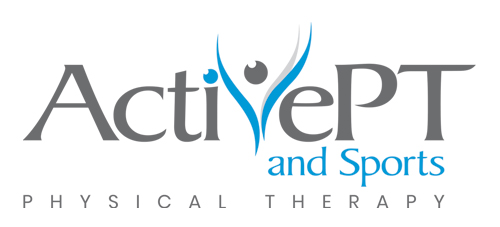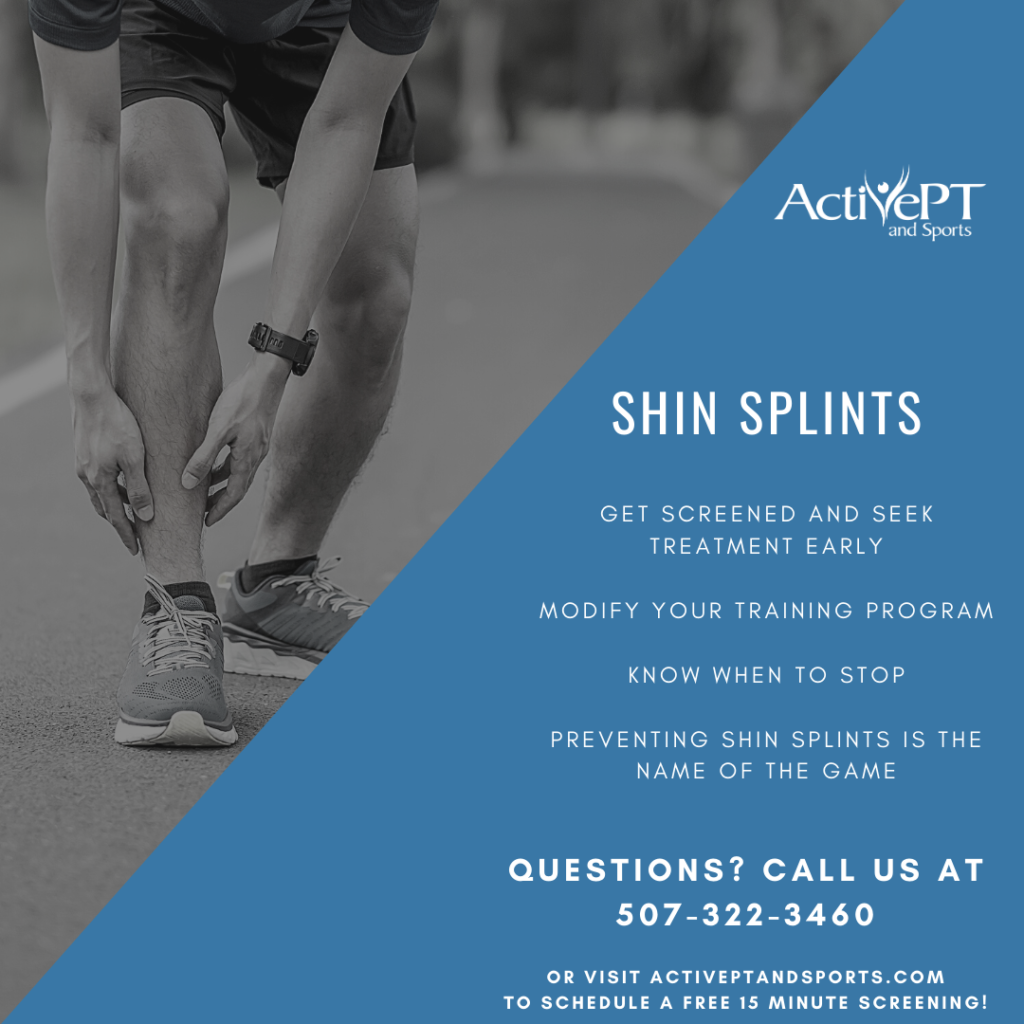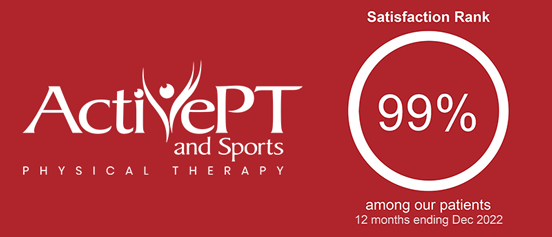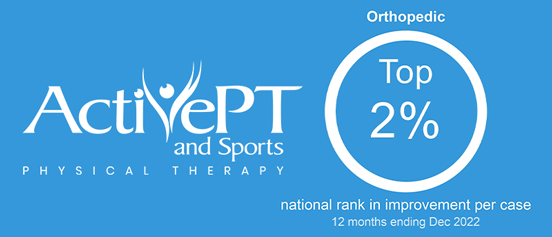Running with shin splints can derail your marathon or half marathon training goals. If your lower legs ache when running, you may be suffering from shin splints. Training for long-distance races can be challenging in the midst of shin splints. ActivePT’s running specialists are here to help with answers to your commonly asked questions about shin pain during long-distance training.
WHAT ARE SHIN SPLINTS?
Pain along the inner border or front of the lower leg while running is often referred to as shin splints. This is one of the most common running-related injuries we treat in our clinics. Medically, we call shin splints medial tibial stress syndrome. The inner border of your lower leg bone (the tibia) may become tender to the touch, especially the lower 1/3 of the bone. The posterior tibialis muscle may be pulling on the bone causing increased stress or your tibia may be responding to too much “pounding.” During marathon or half-marathon training, the causes of shin splints are often predictable:
-
- Running back-to-back days
- Training five or more days per week
- A recent increase in running volume
- A sudden increase in running speed
- Increased/new hill workouts or interval training
SEEK TREATMENT EARLY
When shin splints first start to cause discomfort while running, it’s easy to ignore your pain. Pain often disappears quickly after a run and does not hurt again until your next training run. Your lower leg is trying to tell you to “back off” before something becomes a bigger problem. Most often, continuing to pound at your current level of training will progress shin splints and may even lead to a stress reaction or stress fracture. However, early signs of shin splints don’t require complete rest from training.
Get screened early
Meet with a physical therapist that specializes in running to evaluate your pain location and how it behaves when you run. Share your race and training goals with your therapist so they can help create the ideal plan for your recovery. While pain may only be mild initially and require simple home treatment advice, knowing when to seek more help is important in the early stages of shin splints. Your therapist can also screen you for other issues that may be contributing to your problems, like tight muscles, foot structure, running form, and low cadence.
Modify your training program
Whenever safe, our first goal is to always keep you running. Sharing your marathon or half marathon goals with your physical therapist is key to helping us modify your training when necessary. We will provide you with honest advice and help you evaluate the risks and benefits of your current training schedule. Modified rest suggestions can be very helpful if your lower leg needs reduced impact exercise. We will provide you with endless options to keep your physical performance level high while your leg pain recovers. Suggestions that are often helpful while suffering from shin splints during marathon training include aquatic running or exercise, high cadence cycling, low-impact weight training, rowing machine, and much more. Be wary of medical professionals who provide only one solution to your shin splints, “you need to stop running.”
Know when to stop
If your shin pain causes you to limp the morning after you run, seek medical advice immediately. This may be a sign of a stress fracture. A creative physical therapist can provide a long list of alternatives to keep your fitness level high while your leg heals. A physical therapist who specializes in treating runners can help you assess the risk of continuing to run if your injury has progressed to a stress reaction or stress fracture.
PREVENTING SHIN SPLINTS IS THE NAME OF THE GAME
There are a few key principles you can use to prevent shin splints in your marathon or half marathon training program.
- Gradual progression of your training program is critical – ideally, don’t increase the total volume of running by more than 10-20% per week
- Don’t suddenly add hill and interval workouts to a flat training program – sprinkle them in slowly until your body adapts
- Expect to rest your legs after a hard push – a fast race or a hard hill workout should warrant a recovery day with low-impact exercise like (high cadence cycling)
- Three to four days a week is enough – for most non-elite runners, every other day training yields great results with fewer injuries
The ideal training program for your running level and body type can help you successfully make it to the finish line. Our RRCA-certified running coaches can assist you with creating a training plan tailored to your leg pain and current abilities.
PATIENCE IS KEY
When you change your training program and reduce high-impact exercise, you may find that your shin splint pain doesn’t go away immediately. In fact, it can take weeks or months to completely quit feeling pain when you run. As long as your pain during and after running is gradually reducing, you are on the right path. Continue working toward your marathon or half marathon race day with confidence and eventually, your pain should completely disappear.
If you are struggling with a running-related injury, schedule a free 15-minute screening appointment and get your questions answered by one of our experts today. If you have new goals and want to take your running to the next level, our running performance packages may be right for you.

Garrison Jones, DPT, CSCS
Garrison is a doctor of physical therapy at ActivePT and an avid runner. He enjoys half and full marathon distance races and has completed the Twin Cities marathon, Grandmas half and full marathons, and The Great Midwest Ragnar Relay. Garrison enjoys helping runners get to the finish line.




